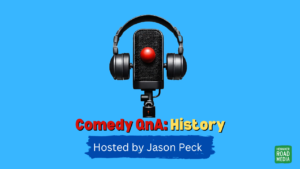Stories and storytelling can be quite a powerful thing when it comes to delivering speeches. Whilst we don’t necessarily have to tell epic stories that go on for many, many days I think that it’s useful for us to be aware of how stories are structured.
We also shouldn’t feel obliged to include all of the elements that I’m going to discuss here. This is just what appears in plays, screenplays, myths and novels. These areas come up again and again.
I first learnt about these elements when I read the book A Writer’s Journey, by Christopher Vogler. But these elements have been around for a lot longer and have been discussed and analysed by many different authors over the years.
I’m using the word Hero here for the sake of ease. But it can mean Hero or Heroine.
Here are some of the key elements of the Hero’s Journey, which is also referred to as the Monomyth:
The Ordinary World – this is the part of the story that sets up the normal life of the main protagonist. Little Red Riding Hood skips around her mother’s house whilst her mum bakes. Luke Skywalker noodles around on his desert farm, that sort of thing.
The Call to Adventure – this is the bit where the Hero is made aware of the possibility of adventure. In our Star Wars example, Luke Skywalker has met the Droids and Ben Kenobi suggests that he trains as a Jedi.
Refusal of Call – oftentimes the Hero refuses or ignores this call to adventure and tries to maintain the status quo. This call and refusal can be repeated a couple of times with increasing urgency, until he has no other course but to accept. Luke says he has to stay on the farm.
Crossing the First Threshold – this is the bit where the Hero accepts the call to adventure and goes on the next part of his journey. He is usually encourage by an elderly master of some kind. In modern terms this could be a grizzled football coach or some other mentor figure.
Tests, Trials and Allies – here the protagonist has to overcome obstacles, and discovers useful allies who can help him overcome these tests or provide other assistance on the journey.
The Ordeal – this is usually a death and resurrection moment. It doesn’t necessarily have to be that dramatic, but it’s usually the “death” or end of his life before he went on the journey. After this point of no return the hero can never go back to his previous way of life. He either stays in the new world or he returns to his old life, but usually wiser.
Refusal – the Hero can also refuse to return to his previous life especially after tasting the magic of what has been experienced and learnt. Take for example Dorothy in Wizard of Oz. Her whole journey is about trying to return home, but then she doesn’t want to after making so many new friends.
Crossing the Return Threshold – this is the point where the hero has to accept the reality of the real world and learn to face it.
Resurrection – this is the bit where the villain makes a final pursuit and battle for the hero and what he stands for. This is why in a lot of movies the bad guy suddenly regains his strength and makes another go after we the audience think that he’s dead. See The Terminator as an example. In the first movie we think it’s been destroyed, but the exo-skeleton gets up and tries to kill Sarah Connor again.
Elixir – This is where the Hero finally makes it back to his old life. But having lessons learned. They have gained some sort of knowledge or special power.
Please note: I have condensed and re-jigged this structure slightly so as to make it readable and easier to understand and apply. If you’re not clear on anything let me know.
We shouldn’t try to stick rigidly to this formula, after all it’s just a set of guidelines rather than a strict set of rules. Often, in movies, these elements gets moved around or dropped completely (look at the way Pulp Fiction was structured). The thing to remember that these elements of the story are there because they have been shown to work.
Here’s what I would do, if you’re using a story in your next speech or presentation, use this template after you’ve written your story and see which elements you have naturally included. For instance, if you’re re-telling the story of when you went on holiday that is literally leaving the ordinary world and going into a special one. Think about the people wyou meet and the events that happen along the way as they apply to the Heros’ Journey.
Do you think that your story would be improved if you included one or more elements from this list to help flesh it out a little more?




3 comments
2 pings
I was reading your key elements and it reminded me of a book, How to read literature like a professor.
I enjoy your posts.
Thank,
Mike
Hi J:
Just re-reading this post. You should get a book called The 7 Basic Plots. It says that all stories basically boil down to 7 plots. It is I believe a standard text on quite a few scriptwriting and film studies courses.
Cheers
F
Author
Hey F,
Thanks for re-reading and the consideration. Funny, they said the same thing about jokes…
I’ll have to take a look at that book. If you’ve not read it I do recommended “A Writer’s Journey” which I used as part of the basis of this post. I mixed it in with other elements and descriptions of the Monomyth as described my Joseph Campbell (amongst others) in “The Hero with A Thousand Faces”.
I found “Hero…” a bit heavy-going myself. “Journey’s” easier to get your head around and you’re able to visualise the elements more clearly. Maybe that’s because movies are the main source of examples and not a plethora of myths and fairytales.
I’ve also read “Story” by Robert McKee, another great book. Although at times I felt it was a little intellectual and it felt slightly academic.
Cheers
JP
[…] Get the details from Jason Peck at ProHumorist. […]
[…] changes direction and the stakes are often increased. Here’s a previous post I wrote about the Power of Myth for Speakers, which talks about some of the different stages a story can go […]